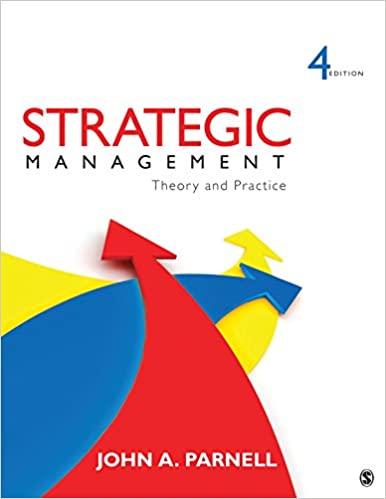In 1997, PepsiCo spun off three of its restaurant holdings(1) Pizza Hut, (2) Taco Bell, and (3)
Question:
In 1997, PepsiCo spun off three of its restaurant holdings—(1) Pizza Hut, (2) Taco Bell, and
(3) Kentucky Fried Chicken (KFC)—in order to focus more on its core beverage business. The resulting company, Tricon Global Restaurants, was renamed Yum! Brands and boasts over 37,000 locations in more than 110 countries—the largest number in the industry—although the firm still trails McDonald’s in terms of revenue.
Yum has three primary business units: (1) KFC, (2) Pizza Hut, and (3) Taco Bell. KFC has about 17,000 outlets, half of which are located in one of more than 80 countries outside of the United States. KFC also accounts for almost half of the quick-service chicken business in the United States. Pizza Hut has about 13,000 outlets throughout the world and leads the U.S. pizza market with a 15% market share. Almost all of its approximately 6,000 Taco Bells are located in the United States, where the brand controls about 60% of the Mexican fast-food segment. Yum also owns Long John Silver’s and A&W Restaurants.
Prior to the spin-off, PepsiCo had sought to create synergy among its beverage, fast-food, and snack food businesses but only with limited success. For example, because the beverage business was owned by the same parent company (PepsiCo) that owned several prominent fast-food businesses, Pepsi was always guaranteed a substantial piece of the lucrative fast-food market for soft drinks. In the late 1980s, however, Coca-Cola began to market its soft drink line aggressively to non-PepsiCo fast-food vendors such as McDonald’s and Burger King. Coke was quick to remind these restaurants that contracts with Pepsi provided direct financial support to KFC, Taco Bell, and Pizza Hut. As a result, Coke was successful in securing contracts with a number of fast-food companies—a factor that many analysts believe led to PepsiCo’s decision to spin off the three restaurants.
About 80% of Yum’s restaurants are franchised. The firm has engaged in aggressive global expansion in recent years, opening more than 1,400 new units outside of the United States in 2010—400 in China alone. Yum controls a total of about 4,000 units in China, where the restaurant earns about 15% of its global revenues.
Case Challenges
1. Do all of Yum’s business units compete in the same fast-food industry, or does each compete in a different industry based on product type? Explain.
2. What kind of synergy can Yum create among its restaurants? What challenges does the firm face by operating multiple related businesses?
3. McDonald’s is known globally for a strong brand image and unrivaled consistency.
What lessons can Yum learn from McDonald’s?
Step by Step Answer:






